
Crater Lake National Park 2026 Travel Guide
Crater Lake is the centerpiece of Crater Lake National Park, located in south-central Oregonin Klamath County.
Crater Lake is the deepest lake in the United States at 1,949 feet, and one of the deepest in the world. The water's intense blue color is due to its great depth and purity.
There are no rivers flowing into or out of the lake; the evaporation is compensated for by rain and snowfall at a rate such that the total amount of water is replaced every 250 years.
 North entrance area to Crater Lake National Park in Oregon North entrance area to Crater Lake National Park in Oregon |
Crater Lake rests in the bottom of a dormant volcano that once stood 12,000 feet tall before its collapse atter an eruption 7,700 years ago of stratovolcano Mount Mazama. As the magma chamber emptied, the peak collapsed on itself, losing a mile of its height as it subsided into a caldera five miles across. Over time, this self-contained watershed filled with snow and rain, untainted by impurities found elsewhere.
Crater Lake features two small islands. Wizard Island, located near the western shore of the lake, is a cinder cone approximately 316 acres (128 ha) in size. Phantom Ship, a natural rock pillar, is located near the southern shore.
Crater Lake itself occupies less than 10% of the park. Beyond the lake, old-growth forests blanket the landscape. Established in 1902, the park protects 15 species of conifers, from towering ponderosa pines to ancient whitebark pines. These trees shelter a wide array of wildlife, including black bears, mountain lions, elk, and spotted owls.
While having no indigenous fish population, the lake was stocked from 1888 to 1941 with a variety of fish. Since then, several species have formed self-sustaining populations.
What to Do at Crater Lake
Hiking, backpacking, camping, picnicking and sight seeing are popular pursuits within the park. Boating and scenic driving around Rim Drive can be enjoyed by visitors during the summer months.
In winter snowshoeing and cross-country skiing provide solitude and a little-known view of the park. Crater Lake is also home to hikes in old-growth forest and cross-country ski trips in the winter months.
Spend a day, or more, and enjoy and explore Crater Lake National Park on your 2026 vacation!
| View across Crater Lake, the deepest in the United States |
 |
How to Get to Crater Lake
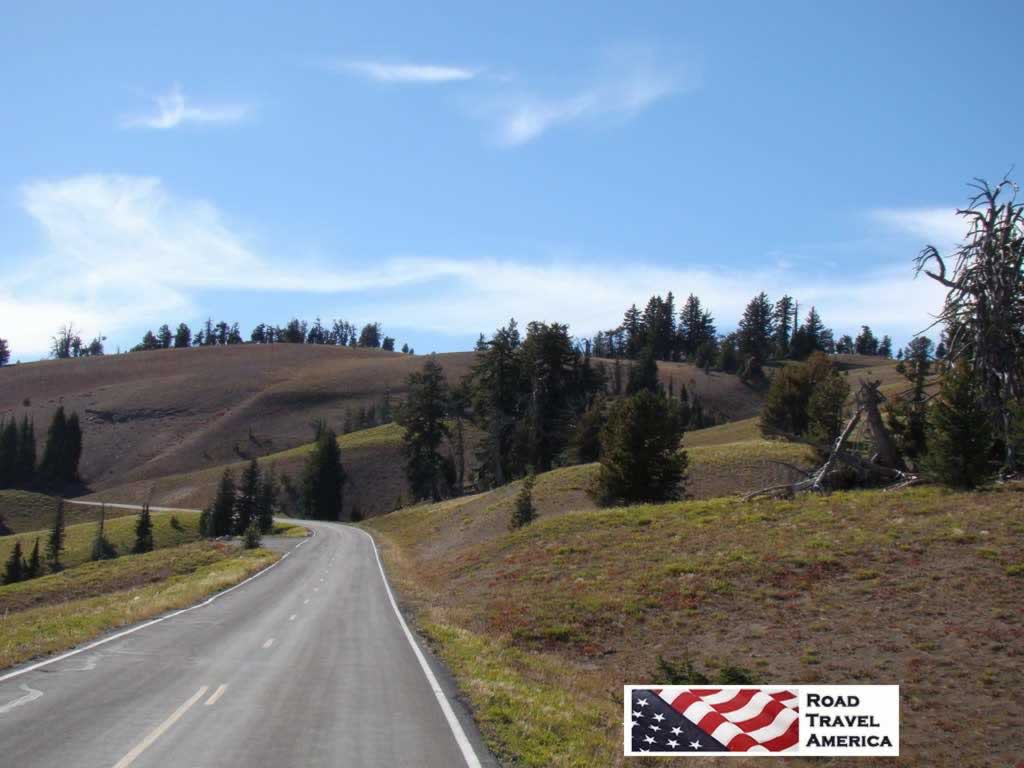 The approach to Crater Lake from the north The approach to Crater Lake from the north |
From the west (Medford) - Follow Highway 62 to the park's West Entrance. Open year-round.
From the south (Klamath Falls) - Take Highway 97 to Highway 62 and the park's South Entrance. Open year-round.
From the north (Eugene, Portland) - Exit Interstate 5 just south of Eugene. Take Highway 58 to Highway 97 to Highway 138. Follow Highway 138 to the park's North Entrance. If the North Entrance is closed, enter either through the West Entrance or South Entrance.
From the northwest (Roseburg) - Take Highway 138 East from Interstate 5 and follow to the park's North Entrance. If the North Entrance is closed, enter either through the West Entrance or South Entrance.
Note that the park's North Entrance is closed for about 7 months each year. It closes November 1 (or earlier if there is significant snowfall). It opens sometime between mid-May and late June.
There are no restrictions on the size of RVs, trailers, or buses allowed in the park. Roads in the park are narrow, however, so visitors should drive carefully and watch for wildlife, bicyclists, and pedestrians.
| The Rim Visitor Center at Rim Village. The Sinnott Memorial Overlook, perched on a rock ledge behind the Rim Visitor Center, features an indoor exhibit room and an open parapet with spectacular lake views. Also available is the Steel Visitor Center at Park Headquarters |
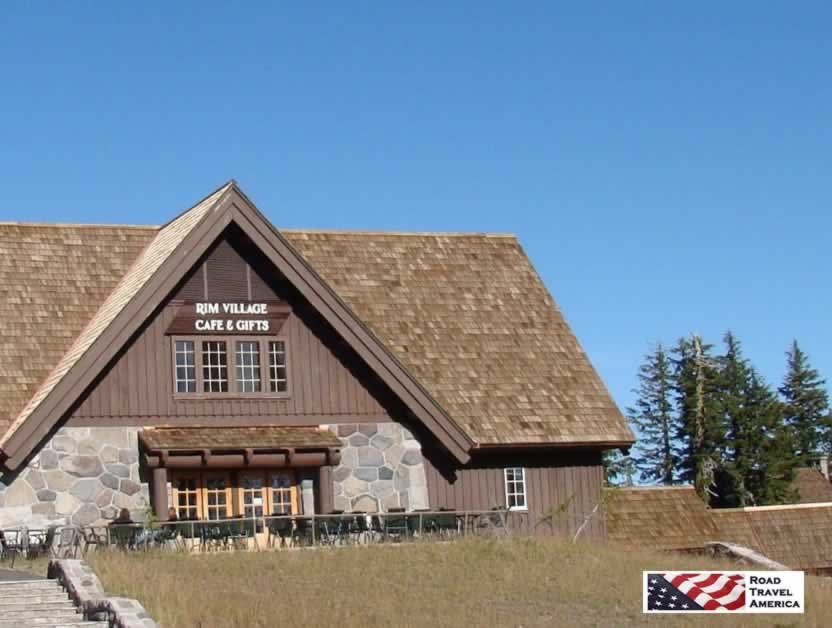 |
Lodging Options in/near the Crater Lake Area
The park has two lodging options, Crater Lake Lodge and The Cabins at Mazama Village. Both are operated by the Xanterra Travel Collection. Other lodging can be found in nearby area cities and towns.
|
| The steep edges and still waters of Crater Lake |
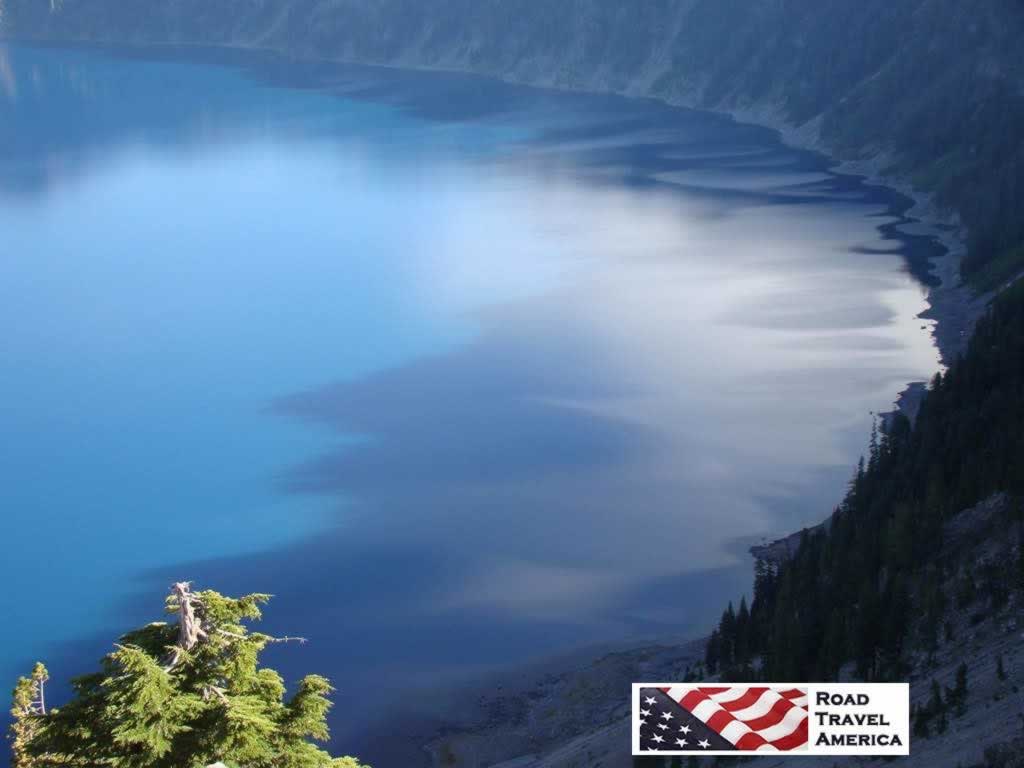 |
The Weather at Crater Lake
Winters at Crater Lake are long and snowy. Storms from the Pacific Ocean dump an average of 43 feet (13 meters) of snow at Park Headquarters. The park's tremendous snowfall is a result of its position at the crest of the Cascade Mountains.
Summers at Crater Lake are short but typically sunny. July, August, and September are your best bets for warm, dry weather. However, it can snow any day of the year. In May, June, and October, sunny days alternate with periods of rain and snow.
Scenes around Crater Lake National Park
| Still, blue waters, and blue skies, at Crater Lake National Park in Oregon |
 |
| Blue water, and blue skies, at Crater Lake National Park in Oregon |
 |
| Crater Lake National Park in Oregon |
 |
| DANGER! Falling will cause injury or death ... stay back from cliff edges at Crater Lake |
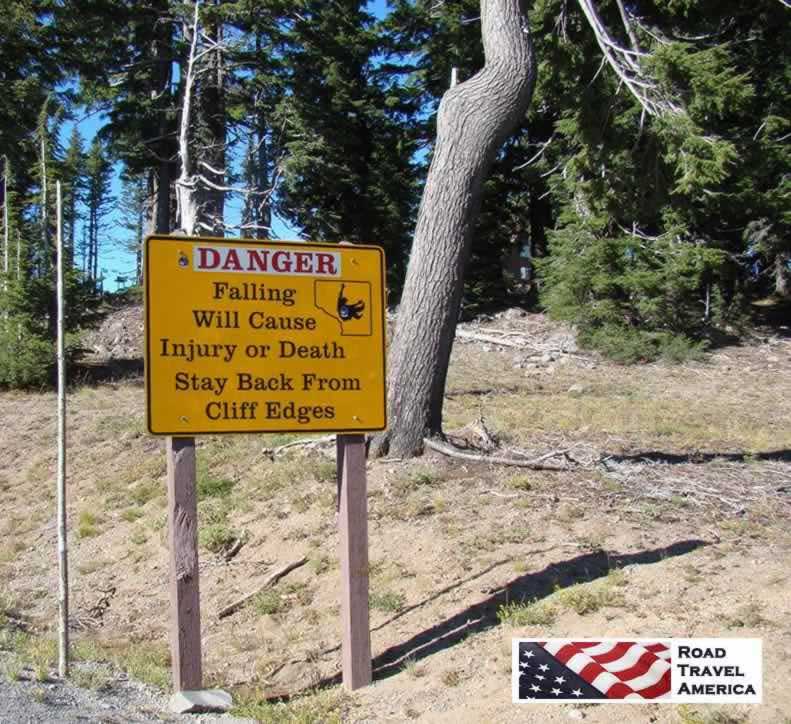 |
| View of Crater Lake from one of the observation points |
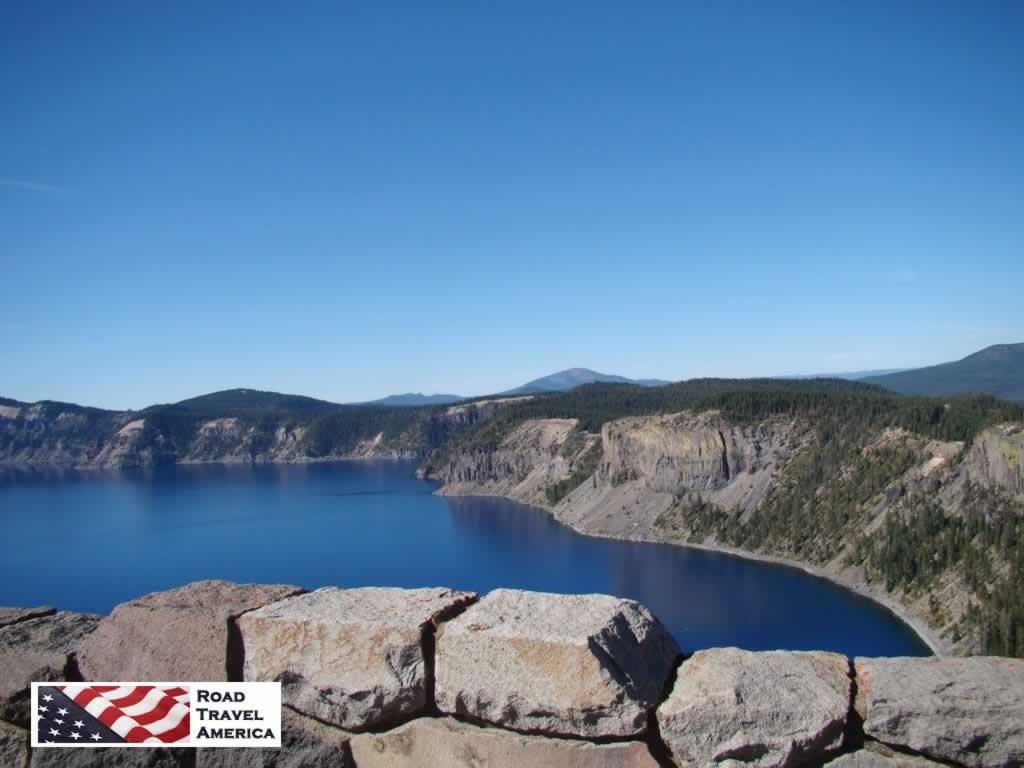 |
Map of Crater Lake National Park (Courtesy of NPS)
 |
Interactive Map of the Crater Lake Area
More Information about Crater Lake
Crater Lake National Park official website at NPS
The address of the park is P.O. 7, Crater Lake, OR 97604. Phone 541.594.3000
Crater Lake National Park at TravelOregon.com
